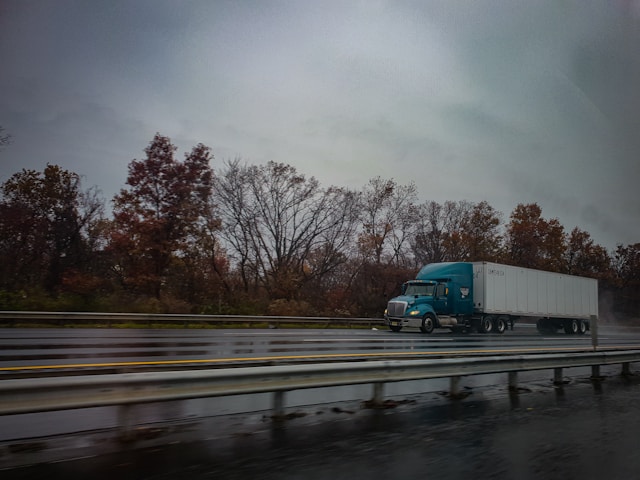The Top 5 Dangers of Sharing the Road With Large Trucks
Sharing the road with large trucks can pose significant risks for drivers, pedestrians, and cyclists alike. This article will explore the top five dangers of sharing the road with large trucks. From blind spots and wide turns to braking distances and rollover accidents, understanding these risks is crucial for promoting safety and preventing collisions.
1. Blind Spots
One of the most significant dangers of sharing the road with large trucks is their extensive blind spots, also known as “no-zones.” These blind spots are areas around the truck where the driver has limited or no visibility, making it challenging to see nearby vehicles. Common blind spots for large trucks include directly behind the truck, along the sides, and several feet in front of the cab. To avoid accidents, drivers should exercise caution when passing or merging near large trucks and avoid lingering in their blind spots for an extended period.
2. Wide Turns
Large trucks need more room to navigate, particularly while turning, which can be hazardous to other cars on the road. This is especially true when turning over. Trucks, because of their size and length, often have to swing wide in order to complete turns. This increases the likelihood of sideswipe incidents occurring with other cars, pedestrians, or bicycles that are in the vicinity. It is important for drivers to be aware of trucks that are indicating for turns and to provide them with sufficient space to safely execute their moves. It is also important for pedestrians and cyclists to take care while crossing junctions or going near vehicles in order to avoid being trapped in a turning radius.
3. Braking Distances
Understanding braking distances is crucial when sharing the road with large trucks, especially considering the most common causes of commercial truck accidents. Due to their size and weight, large trucks require significantly longer distances to come to a complete stop compared to smaller vehicles. This extended braking distance poses a significant danger, particularly in situations where sudden stops are necessary. Drivers should maintain a safe following distance from trucks to allow for adequate braking time and avoid rear-end collisions. Additionally, being aware of braking distances can help drivers anticipate potential hazards and take proactive measures to stay safe on the road. By respecting braking distances and exercising caution around large trucks, drivers can mitigate the risks associated with sharing the road with these vehicles.
4. Rollover Accidents
Large trucks are more prone to rollover accidents than smaller vehicles, particularly when navigating sharp curves or uneven road surfaces. Factors such as high speeds, improperly loaded cargo, or sudden steering maneuvers can increase the likelihood of a truck tipping over, posing a significant risk to nearby motorists and pedestrians. Drivers should exercise caution when sharing the road with trucks, especially on highways or winding roads where rollover accidents are more common. Avoiding sudden lane changes or aggressive driving behaviors can help reduce the risk of being involved in a rollover collision.
5. Tire Blowouts
Tire blowouts are another potential danger associated with large trucks, posing a threat to both the truck driver and nearby vehicles. The sheer weight and pressure exerted on truck tires can increase the likelihood of blowouts, especially if the tires are worn or improperly maintained. When a tire blowout occurs, the truck driver can struggle to maintain control of the vehicle, leading to swerving or loss of control. To mitigate the risk of tire blowouts, truck drivers should conduct regular inspections of their tires and ensure they are properly inflated and in good condition before hitting the road.
Conclusion
In conclusion, sharing the road with large trucks presents several inherent dangers that drivers, pedestrians, and cyclists must be aware of to promote safety on roadways. From blind spots and wide turns to braking distances, rollover accidents, and tire blowouts, understanding these risks is essential for preventing collisions and minimizing injuries. By exercising caution, maintaining a safe distance, and respecting the space and limitations of large trucks, all road users can contribute to safer roads for everyone. It is crucial to remain vigilant and proactive in navigating the challenges of sharing the road with large trucks to ensure the well-being of all.






